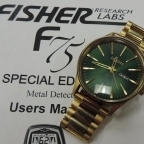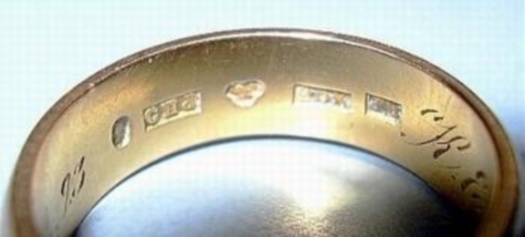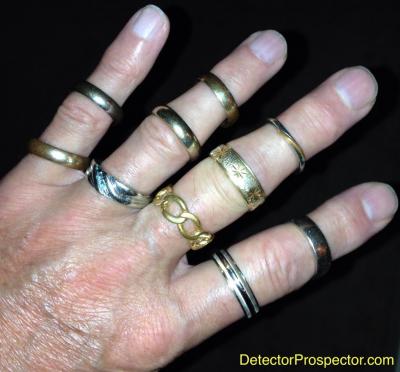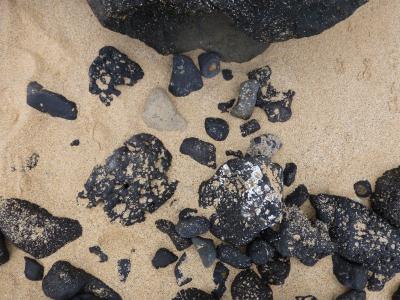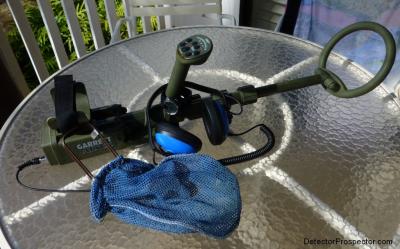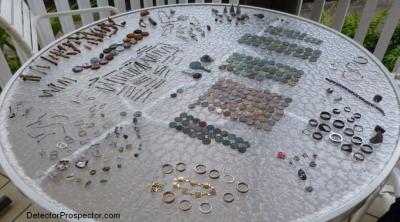Leaderboard
Popular Content
Showing content with the highest reputation on 06/28/2017 in all areas
-
Hello everyone, long time away from the forums. I have to be up front on the Gold Monster 1000. Everyone pretty well knows that I love my GB Pro, however, I think I have a new favourite. I am still playing with the Monster but very impressed at this point. I have to go along with Lunk in the fact that it is a VLF, and it takes me back in time also, but this futuristic unit has a definite edge into the future. With the Monster and the real Monster,(Zed7000) I think I have the ground here in Redding pretty well covered.6 points
-
3 points
-
The old faithfull patch where I found the 2 cent coin is still giving up the odd piece of silver jewelry and silver coins and wheats now and then, plus junk jewelry. Some of these rings and pins come from the school patch I work a few times in the evenings. Today I hit a four star park I never hunted before but have been eyeballing for a few years, so couple pieces from there in the picture. I took photos of that hunt because it was a scouting mission with good results. I'll post about it when I get more time. Not much remarkable, IMO. No gold yet... worst drought yet.2 points
-
Actually, it does pretty well in damp and dry sand, I dug a bit of canslaw at about 8 inches yesterday. My biggest problem is that beautiful blue water where all the best goodies hide. It just keeps calling my name every time I go to the beach. I've almost drowned the DFX a couple of times in knee deep water that suddenly turns waist deep with a big wave. ~~~~~~ But help is on the way! There's a dealer in Arizona who has an demo Infinium at a big discount and the best part is that it still has the warranty. Now comes the hard part. He's on vacation so I'll have to wait about 2 weeks for it. I'm so excited! Thanks Swamp and everyone else who's been patiently helping me pick out a sibling for the DFX!2 points
-
The Deus Silencer setting is like most filters. Nearly all work by trying to eliminate weak signals in favor of stronger signals. This being the case, applying a filter always results in some loss of depth and sensitivity. The trick is that that problem you are trying to fix (false signal) has to be worse than the problem you cause (decreased sensitivity). The Silencer is supposed to reduce faint spurious signals created in dense ferrous trash. Let's say on a scale of 1 - 10 most good targets beep at 6 and above, but you are getting lots of distracting faint 1 and 2 signals. Increasing the Silencer can greatly reduce these faint false signals allowing you to concentrate on the better signals. Now on a later hunt this spot is "cleaned out" and you want to find what you missed. It may be that one of the faint 1 - 2 signals is a faint good target. By reducing the Silencer setting or turning it off, you now get these faint hits. Thirty are false signals but one is that nice silver coin you were looking for. Of course they could just as easily all turn out to be trash. Basically, I leave filters turned off unless forced to use them. I know when this is because I am ready to give up because of too many false signals or "noise". Apply just enough filter to do the trick, and no more. As always it is an individual thing as we all have different tolerance levels both for noisy detectors and for the amount of trash we are willing to dig to get a good item. People who do run detectors noisy basically don't trust the machine to do the filtering and prefer to use their ears instead. This can be fatiguing and a judicious application of a filter can result at the least in a more pleasant detecting experience.2 points
-
Gotta agree the hot rock elimination of the auto sensitivity 11 is pretty good. With its sensitivity setting range in both auto & manual and auto HF GB the Monster, as is, while not a competitor to the Z or PIs (except on shallow scraps) jcomplements them, suspect it may be the start of a new era for the VLFs. Certainly has brought back the VLF fun to my prospecting although certainly not a weight producer. A challenge to the other manufacturers for sure.2 points
-
Lunk, Thanks. When you published that report I didn't really 'understand' the Monster language. Now I do even if I don't own one. If you can track out an ironstone and by some chance get an indication of a little gold in that rock ... Hopefully more people will reread your report you linked to me. Thanks again. Mitchel2 points
-
Thanks Randy, Even the tiniest pieces give a crisp response close to the coil, however at the edge of detection depth targets give a weaker response and many times only in one direction of the coil swing. These kinds of targets won't activate the gold chance indicator until the coil gets closer to the target.2 points
-
So I was on the beach yesterday just swingin' the DFX having a great time. Had my headphones on, minding my own business, when this foreign tourist (sounded like New York) walks right up to me and shows me some wire-looking stuff with a fish hook attached. She then asks me what to do with it. Really, lady? So I stop what I'm doing, take off my headphones, and politely suggest any one of several garbage cans conveniently located just across the dunes. She then asks me which one I use. Huh? Still trying to be polite, despite the circumstances, I told her "the one my bike is parked next to". She then says "I bet you don't throw your garbage away". Excuse me? I said "I bet I do" while I pull a handful of bottle caps and can slaw out of my right pocket and show her. She kind of sniffed and said, "Well maybe you do" and walks on down the beach without another word. What is it about swingin' a detector on the beach that makes people think they can say whatever asinine thing to you that pops into their silly heads? People that would never dream of going up to a complete stranger in say, Wal-mart, and making some rude comment, think it's perfectly fine if you have a detector in your hand. I have no problem with kids that want to "help" you dig treasure, beach bums asking for your crusty quarters, and the inevitable old salt with a story about the Hopeless Diamond that he dug on that very beach in '72. But going out of your way to ruin a beautiful day for someone else is just beyond me. Rant over. Thanks ya'll!1 point
-
My beach experience suggests that it's way more women than men who are curious enough to ask a question. I would recommend beach detecting as an excellent pastime for a single guy - you meet lots of attractive ladies - my wife noticed that right away!1 point
-
I am using the GM1000 pretty much exclusively with the large coil. I have no issues with coil knocking but I am usually running exclusively in deep seeking all metal mode with Auto+1 or manual sensitivity between 6 and 8.1 point
-
I think she was just mad because I didn't offer to relieve her of the fish hook and told her to go dispose of it herself. I already had a pocket full and didn't need hers! I am REALLY missing Montana right now. We go way up in the mountains and sometimes don't see another human for days.1 point
-
That picture of your pendant is too small and dosent do it justice lol. I know you can do better as I see you are a professional photographer. Put that Nikon to work and show us a better photo strick1 point
-
Most people are fairly friendly. Sounds like you got a wierd one maybe with with mental issues. There are lots of unstable people out there... Most times I try to not to make eye contact in order to avoid conversation. Besides it eats into detecting time. Another trick to is pretend you might have a stability issue...sharp twitch of the face or head jerk occasionally will make people thing twice about approaching you. I thought you were going to say that some other treasure hunt cut in front of your grid and stole all your treasure lol Have fun out there... thats what it's all about. strick1 point
-
"Pot committed" -- I like that and will add it to my aresenal of MD'ing terms! What is 57-60 typically on a Garrett AT Pro? I would think the White's Bigfoot or Tesoro 3x18in^2 would be helpful in general with these searches, although 5 inch depth (as here) might be at or past the edge of detection for such a narrow coil?1 point
-
Well I received my hermit pick and i have to say it is a beast at digging holes, as big as it is you would think it would be really heavy but it is not,Bunk shipped it out on the 17th and it was sitting in my post office that Monday but I could not pick it up till the following Monday as I had to go to the valley of AZ for an emergency and was down there a week boy was it hot,the only thing I really do not care for on the hermit pick is the handle is pretty large diameter for my hands and I have large hands but that can be adjusted to the way I like it with a little red neck ingenuity over all though it seems to be a well built pick have already dug a couple of hole with it and it makes really quick work of the job.1 point
-
I should add here that the hot rock elimination seems to work best at the auto sensitivity setting of 11.1 point
-
Mitchel, when the Monster is swamped it gives a distinct overload alarm so that you know to back off. And the iron discrim is excellent. As far as how the Monster copes with hot rocks and ironstones in particular, see my previous post on the subject here:1 point
-
I think it's good they are taking the time to tweak it. Kinda feel bad for the dealers who took preorders so early, but at least they can offer an MX Sport to those who don't want the summer to slip away before getting a new detector.1 point
-
Hi Strick. I wish I could find a TDI Pro for sale! I'm thinking that PI's are made to cut through mineralized ground and that's kind of what wet salt sand is, in a way? We live within bicycle distance of 7 different beach parks, but the conditions are pretty much the same at all of them. Not many cuts or low places. Of course, I have been confined to knee-deep water so far by the DFX. I just keep thinking ok, there's not much in the top 4 inches that my DFX will cut through. But if I just had a good PI machine, there would be lots more goodies deeper down! Always the eternal optimist. LOL. Thanks so much! Ammie1 point
-
Did you check inside the nest, sometimes you may find gold coins or other really interesting things..1 point
-
https://youtu.be/1XkPeN3AWIE For all of my Yank friends that don't know what a Bower Bird looks like, I found this link. Great video Norm McQ1 point
-
1 point
-
I need one of those for the wife. I went fishing and took her along. Drove around the lake until I found my spot for the day. Got there and got out of the truck and heard the words, "I've got to pee". I get back in the truck and drive her to a toilet. (she is frail with bad hips). When finished I drive back out to the spot, get my gear out and get all setup when I hear this, "honey I'm sorry but I got to go to the bathroom again, #2". I pack all my gear back up and drive her back to the toilet. When finished I drive back to my "spot" only now to find someone else parked and fishing my honey hole. sigh. This is one I've been looking at, the bumper dumper. But your chair model ( with arms for support) looks to be a better idea. Especially if I can integrated it into a bumper dumper.1 point
-
Bunk is a great guy and an equally good detectorist. If you were ever to make it to the states and you needed a 'guide' for some Arizona locations then you should consider Bunk.1 point
-
For me the Auto GB is a must for our conditions, going back to the GBII was a pain because I was on the dials all the time or if I got lazy I had to deal with a less than optimal machine. At the end of the day the GM is just a decent VLF with features that make it nice to use. The key for me is getting the Ground Balance right and then getting the Auto Sensitivity to then come into alignment, when that happened I was very happy with the way it handled our ground. At the end of the day the GM 1000 is a VLF detector and as such behaves just like every other High Freq VLF I've used over the years in my locations, as such it requires a VLF approach and mindset. JP1 point
-
The Gold Monster 1000 is a VLF detector. If the ground is bad enough you need a PI the GM1000 does not change that. No new patent numbers attached! The GM1000 does ground track. How it's ground tracking compares directly to the GMT in bad ground I do not know. It was tested in Australia by JP so his posts in that regard are more relevant than mine. Aussiau reported from Australia. The Gold Bug 2 does not have ground tracking. The GM1000 also has auto-sensitivity. No other prospecting detector has this. It is possible that the ground tracking combined with the auto-sensitivity will allow a person to more easily operate on difficult ground than might be the case with other detectors. Notice I am not saying better, just easier. Look guys, it's just a decent little detector, that's all. Setting up a Gold Bug Pro and a GM1000 for a grudge match might be interesting but that is the level we are playing at, not even close to SDC, GPX, or GPZ territory. I am not trying to sell anyone on this detector and no matter how much anyone tries I am not going to say anything different than what has already been said. Entry level, entry level, entry level.....1 point
-
1 point
-
In case you have not been following the tale at Steve's 2013 Alaska Gold Adventure here is a photo from the final entry. This is the 6.5 ounce solid gold nugget I dug the summer of 2103 and kept quiet about until now for reasons explained in the tale.1 point
-
Well, back home safe and sound after a couple weeks in Hawaii with my wife. We visited the island of Kauai for the umpteenth time. We like the laid back vibe, made even more so by being familiar with everything. We do what we both like - she relaxes in the sun and I go metal detecting. And lots of walks and dinners together. I am glad I waited to post this as I have calmed down some now. A post a week ago would have been a bit much and made the Garrett ATX sound like God's gift to metal detecting. Now I can be more even handed about it. I will do up much more of a story for Steve's Mining Journal soon. This is just a post about how the Garrett ATX did for me in Hawaii. The back story is told at Steve's Mining Journal about prior trips made to the same location over the years. Hawaii has always been a pet project of mine as it is the most difficult environment I have even encountered for a metal detector. There is of course the salt water. There is also literally military grade electromagnetic interference (EMI) from military installations plus missile and satellite tracking stations. Finally, there is a mix of non-magnetic coral sands and volcanic basalt derived sands and cobbles. If you stick to the tan to nearly white sands you can get decent performance from many detectors. But when the basalt gets involved is where things get fun. Most prospectors are familiar with basalt rocks and the challenge they present in gold prospecting. Well, just take the same hot rocks and douse them in really salty water and heavy duty EMI and you have Hawaii. Multi frequency VLF detectors like the Fisher CZ or Minelab Excalibur do ok in in the stuff but lack any real punch. They do best in the whiter sands, but the basalt sands and cobbles really leave them feeling gutless. I went to PI detectors early on, and overall probably had my best results with the various White's Surf PI models. Again, however, they worked best in homogenous materials. Places where the white sands and basalt cobbles mixed gave the Surf PI fits as it hit on the basalt cobbles. In darker sand beaches it was near impossible to keep the machine steady over the bottom in the surf, leading to lots of false signaling. I tried several Garrett Infinium detectors in Hawaii and got tantalizingly close to the detector I wanted. The Infinium as a ground balancing PI could tune out the black sands and hot rocks and eliminate many of the false signals. But it introduced just as many if not more by an inability to play well with salt water and EMI. The interference in particular made the Infinium almost unusable at times. I really wanted a stable Infinium, and confirmed this idea by using the White's TDI in Hawaii. It seemed to solve the issues I was having with the Infinium and so I waited for White's to make a waterproof TDI. And waited. And waited. I waited so long that Garrett had time to take what they learned from the Infinium and another model, the Recon, and build a next generation PI, the Garrett ATX. I was cautiously hopeful that all the noise I had made over the years had been heard, but frankly, I was not getting my hopes up too much. On top of that, the good old days are gone. I used to spend a couple weeks in Hawaii years ago and never see anyone with a detector. This trip I saw people every day! Ok, often the same guy but also more different people detecting than probably all my previous trips combined. The competition has gotten fierce by comparison to the old days. And yet I just had my most successful trip to Hawaii ever. I recovered over a couple dozen rings with the ATX and half of those were gold or platinum. Some silver rings, a nice 14K bracelet, and a pile of coins and there inevitable PI junk. You will have to wait for the full story for details and more photos but here is a teaser of many of the good finds taken a few days before I wrapped up. Eight Gold and Two Platinum Rings Found by Steve Herschbach with Garrett ATX in Hawaii (Click on photo for larger version) You can probably see why a post earlier might have been a bit overly excited! This despite bad weather early on and all the extra detecting competition. The Garrett ATX is the best PI detector I have ever used for difficult water hunting. Hands down, no comparison. I have to qualify that by saying that what makes it shine is the severity of the conditions. A person buying it and using it on clean white sands in Florida would probably have a less enthusiastic reaction. There is a lot of confusion regarding ground balancing PI (GBPI) detectors like the Garrett Infinium or White's TDI. They do not air test well against good VLF detectors and indeed do not really perform all that well against them in mild ground. People never really understand what detectors like these are all about until they get into difficult ground. The kind of ground where the best VLF detectors lose half their depth, the GBPI detector just keeps plugging along, and all the sudden now have a big depth advantage. Not because they go so deep to start with, just that VLF detector fare so poorly in really bad ground. GBPI detectors only really shine in the worst conditions. Let that sink in because it is very important. Anyone reading this should not get the idea these detectors are the be all or end all for all circumstances. But when the going gets tough, when other detectors fall on their face, a GBPI detector like the Garrett ATX can be the answer. Tuning a detector like the Garrett ATX can really bother some people. There is this resistance to doing anything that reduces the theoretical max depth of the detector. As soon as you start getting into reducing settings the feeling is that "well, yeah, but now it does not go as deep". The reality is that any machine that can be run maxed out in bad conditions has left some performance on the table. You may be able to max settings in benign ground, but you should have to back off of max settings in really bad conditions. That is why the controls exist - to compensate for bad conditions. The goal is to be set as high as possible while getting stable performance. The ATX is a powerful detector, and so it should be expected the machine has to be dialed back in severe conditions. The ATX has three adjustments that affect the depth. The Gain control is the simplest. You decrease the sensitivity of the detector to help compensate for conditions that are introducing too much noise. Just like the Gain or Sensitivity control on a VLF detector. This control was lacking on the Infinium and is a major reason why the ATX is superior. There is the pulse delay, which Garrett labels as a discrimination control. It is, sort of. Without getting all technical on you it is also a sort of sensitivity control, in that increasing the delay or discrimination also eliminates signals from weak conductor targets like foil, hot rocks, or salt water. This is really the only control you have on the Infinium to deal with false signals and it serves a similar function on the ATX. Finally, you have the ground balance. The ground balance is basically another type of discrimination circuit or filter. The signal produced by the ground is determined and then eliminated. However, this comes at a cost. Items that read the same as the ground signal are also eliminated, and items near to the ground signal will exhibit reduced signals. The White's TDI makes it easy to demonstrate this. You can turn the ground balance completely off, and when you do so the machine air tests far better than it does when you turn the ground balance on. This is because of the subtractive nature of the ground balance circuit on the TDI. Also, because it has a manual ground balance, you can see the effect of tuning the ground balance control closer to and farther from a particular target response. Instead of tuning out the ground the control can be manipulated to tune out other items instead. It is just a basic discrimination circuit. Different ground balance methods can affect items to greater and lesser degrees so the example shown by the TDI should not be taken as being the same with all detectors. But the effect is real and does exist to some degree on all ground balancing detectors, both VLF and PI. So why use ground balance? That should be obvious - to tune out ground responses. If there is no detectable component in the ground you would be better off without the ground balance circuit. Such conditions rarely exist, but they do exist. Absolute pure white coral based sands are one of them. The ATX at its hottest will detect salt water however, and new to the ATX is the ability to ground balance out the salt signal instead of the ground signal, but you are trading some sensitivity for stability doing it. Long round about way to explain that when the Garrett ATX is turned on with factory default settings the ground balance setting is at a minimum. The ATX should be tried first with the factory default setting and on many beaches you will not want to ground balance it. Just leave the discrimination (pulse delay) at zero, set the gain as high as possible while still allowing the machine to be stable, do a frequency scan, and go. In Hawaii at my location however I could not do this. I could on clean sand but not in the cobbles I wanted to hunt. But first, a total surprise. My ATX was almost totally immune to the EMI that I had previously experienced on Kauai without even doing a frequency scan. The frequency scan was basically redundant. That one thing made the ATX a huge advantage for me before I did anything else. I would not have believed it had I not had a White's Surf PI along for backup and sure enough, when I fired it up, the EMI was there. It was discernible in the ATX non-motion mode but even then nothing to worry about. I. Do not know what Garrett did or if I have a magic ATX but this one thing alone really floored me. It absolutely eliminated my number one problem with the Infinium. Basalt cobbles in sand on Kauai A detector with all controls set to max is in theory getting the best depth. But if it is not stable you cannot work with it, so you have to adjust back to find the best balance. The ATX is a very powerful detector and so I found a combination of settings that worked for me to get quiet, stable performance. This is in no way being advertised as a setting to for you to use! It is what I did for this location and other locations will take different settings. In general, the more powerful all your settings can be the better while still being able to have a stable running detector. So the ATX with factory default (minimum) ground balance, zero discrimination (pulse delay), and max gain would be at its most powerful. The worse the conditions, the more you may need to dial the settings back. The problem is with all the settings maxed out the ATX is very sensitive to small gold, but that also means it picks up salt water and hot rocks. I played with the gain control and the pulse delay (disc) control looking for a balance that left the detector running quiet. A discrimination setting of three and a gain of seven made the ATX submerged in salt water run like a VLF. I periodically reduced the disc setting or bumped the gain higher and noise was introduced, so settled on the 3 and 7 setting for my Kauai beach. Then I found a fat basalt rock buried in the sandy bottom and ground balanced over it, eliminating the signal. I would be the first to admit these settings were probably aggressive and of course costing me some depth in theory, but I got what I have always wanted in Hawaii. A PI detector running quiet as a VLF and by that I mean just purring along with a threshold sound, and when it made a noise, it was because I had a target under the coil. Here is another way to look at it. A very hot detector will detect salt water. It will detect hot rocks. And it will detect things you want. EMI can also be an issue. The trick is to reduce the signals from the things you do not want to hear as much as possible while enhancing the good signals as much as possible. It may be letting unwanted signals through will also increase depth on desired targets a bit. It may also be true that too many signals from undesired targets will inhibit success. You have to decide for yourself where the balance lies. If maximum depth is the goal then digging more undesired targets may indeed pay off. In my case I had plenty of targets, so the goal was quiet, efficient operation. I would not hunt clean white sand set like this. I would have the settings maxed out. I had a strategy in mind here, and my goal was to detect in the basalt cobbles. I was not tuning the machine for maximum performance in the easy stuff, but for maximum performance in the worst stuff. I wanted to detect the places where targets were more likely to have been missed by other detectors. Finally, after one go with the stock coil, I switched to the 8" mono coil. A few reasons. First, it is easier to handle underwater and fits in depressions better. It can be pushed through sand ridges and is less likely to move on the shaft. And I could find items edge on with it easier than with the stock coil. By that I mean turn the coil on edge and drag it in the sand and it acts like a pinpointer on small surface targets. The edge of a mono coil is very sensitive. A smaller coil is easier to pinpoint with to start with anyway. And honestly, I used the 8" mono because I was worried about sand getting in the twist locks and giving me problems, possibly even seizing up the rod assembly. The 8" mono and shaft assembly was my sacrificial lamb. If it got totally screwed up my stock coil would still be fine. Garrett ATX with 8" mono coil (goodie bag attached to arm strap, waterproof watch on handle) I may as well relate now that I did have issues with sand in the twist locks but not as bad as anticipated. The lower two twist locks seemed just loose enough that at the end of every outing I just worked them back and forth and the rod in and out and they cleared. But the upper one gave me problems. It got sand inside that refused to come out, even after taking it off and working on it under running water for a half hour. For some reason that upper most twist lock was just a bit tighter to start with and the sand would not clear out. Yet it never quit 100%. I lost most of the ability to twist the lock but it still twisted just enough to hold the rod in place. I am asking Garrett for advice on where to drill a couple holes or maybe slots to see if we can get these things clearing sand a bit better. Overall I actually am ok with them but they need improvement. In other types of sand it could be a big problem. I am going to see if I can get my upper lock to loosen up similar to the lower two and will report back later. The rod assembly got scored up quite a bit from being extended and collapsed with sand in the assembly. I will post photos later. Nothing that bothered me but some might hate seeing their expensive detector getting ground up like this. I have to say at the end of the day the physical design and the rod assembly in the water were nothing short of brilliant. I have given the ATX low marks for prospecting as being a duck out of water. The waterproof design adds weight, complexity, and expense not required for most dry land prospectors. But in the water the ATX felt really, really good on my arm. It is slightly negative so will settle on bottom if released. But not much; it is essentially weightless on your arm underwater. The rod assembly was a dream. I was working in heavy surf with 40 lbs of lead weight on. I steadied myself many times by leaning on the ATX with absolutely no fear it would break, and the rod never slipped. I could get in the shallows on my knees and shorten the rod down as short as I liked. And just right, no fumbling for the right holes, just loosen a twist lock or two and put it right how I wanted it. Better yet, due to the three piece design, I could also extend the ATX to be longer than any detector I have used underwater. I was in 6 foot of water with just my snorkel in the air, and easily detecting around me. I do a lot of breath hold recovery in deeper water and the ATX was just so easy to adjust for whatever depth I was working at. So easy and so solid and tough that I 100% forgive any little work needed to sort out the twist lock situation. This is one really great handling detector underwater in rough surf conditions that would leave other detectors in serious danger of breaking. The 8" mono was perfect for me. It stayed where I put it and I pushed it around a lot. I learned quickly if I wanted to adjust the coil position to be flatter all I had to do is turn the detector over and push down on the nose of the coil. Maybe not as easy as pushing down on the heel of a coil with a rod mounted in the center instead of the rear but no big deal, mainly because the coil stayed put. After two weeks of heavy use I never had to adjust the coil tension and it showed no signs of having any issue with all the sand it ran through. I had no scuff cover, and the coil shows no sign of cracking, just your normal scuffing from use. The epoxy appears much improved from the old Infinium days. A weak point - that tiny spring loaded rod lock, the one you flip to disengage the rod and coil assembly. The tiny spring popped out on me once. I took it apart, made the spring end ninety degrees again, and it worked for most of trip, but slipped out again last day. Not a big deal but needs beefing up. Be sure when twisting the rod and cams while cleaning to not hold the detector body. You will be twisting against that little lever. Hold onto the rods themselves and twist the cams. We need to find out what the part number is for the coil and headphones connector covers. Everyone should have a couple extra. Better yet, a couple spare caps like are fixed to the back of the ATX to cover the male headphone connection when not in use. One of these to put over the male coil attachment point inside the housing would be very helpful when rinsing and cleaning the ATX. Take the coil off, put the cap on, and now no worries while cleaning. I will find out the part numbers and pricing for those and get some and suggest ATX owners do also. OK Steve, quit delaying! What about the rings? I saw no point on beach hunting with all the competition. One guy in particular walked the beach a couple times every day with a Surf PI. I saw a couple Surf PI detectors at work, a Minelab Excalibur, and a Tesoro Sand Shark or Piranha. They all walked the beach and only the Excalibur guy ventured into the trough when it was calmer once. I spent all my time in the surf or deeper water with a weight belt and mask and snorkel. I recover targets by fanning or digging. And I went looking for mixed coral/basalt harder bottoms instead of deep sand. I played on the beach a bit and hit deeper sand underwater but basically all my finds came off of more solid bases. I am not going to say the ATX was some kind of super depth monster. That would be misleading and really missing the entire point. I have no doubt it was getting as good as depth as could be wrung out of the conditions. I was easily getting nickels down to ten inches in the basalt, maybe a tad deeper but honestly it is hard to tell recovering targets underwater while holding my breath in the surf. The real thing I am trying to relay here is the ATX was rock solid, just like using a good VLF above water, but in the worst detecting conditions I have ever encountered. It allowed me to just get on with the business of detecting targets and recovering them. If I was lacking for targets maybe fighting for another inch would be the name of the game but I never ran out of targets. The rings just banged! Nickels hit hard. By virtue of the ground balance system large junk goes low tone and I ignored many low tone targets. That cost me some dimes, copper pennies, and quarters but that is ok. Nickels, zinc pennies, and rings go high tone. As do sinkers, bottle caps, hair pins, and aluminum. Still, being able to ignore low tone targets upped my odds some. Though I dug a lot of low tones also just to learn more and frankly, because I have a hard time passing targets. You just never know for sure until you dig them and I was there to dig targets. Still, this photo shows my target mix skewed to high tone targets. With the exception of a few large items discarded at the trash can this is every item I dug over the two week period and about 50 hours of detecting time in the water. Steve's Finds in Hawaii with Garrett ATX (Click on photo for larger version) Another benefit with the ATX is the adjustable target volume and threshold, a real boon in an underwater detector. I had brought Gray Ghost Amphibian phones with me that started out loud enough but then got too quiet to hear, so I had to FedEx a set of Garrett phones in quick. I like the sound of the Ghosts better but not if I can't hear them. I surmise the sound chamber was filling with water and so will return them to get checked out. First time DetectorPro phones ever let me down. The Garrett phones have a lower tone but worked just fine. The volume and threshold control on the ATX makes them much nicer to use since they can be set comfortably for both above and below water use even though they have no volume control themselves. You can even set the volume on the fly easily while underwater. This is a very nice thing that most underwater detectors lack. I have read a few posts by people very concerned about the placement of the headphone connector. Total non-issue for me. It is under my right elbow and was never a concern at any time. Icing on the cake? The ATX retains all settings when turned off. Once I found my magic settings I was so happy with how the ATX was running I was afraid to change anything and did not have to. Just turn it off, turn it on, and ready to go. Everything is just the way you left it. This is very important with the ground balance setting. It is the one setting you have no idea where it is set. I wish and am suggesting that when the detector is manually ground balanced the LED indications reflect the entire range and show you where you end up at for future reference. Right now the LEDs simply follow to audio and reduce to nothing when the unit is ground balanced. But where am I and can I get back there? You have no idea and neither did I. All I knew was my ATX was running great and recovering targets at what I thought was good depth so I left it be. I used rechargeables exclusively. I kept rough track of detecting time and charged up about every ten hours. Again, it was nice being able to pull batteries out, charge, reinstall, and when the detector was turned on again no tuning was required due to the retained settings. I carefully looked for water in the battery compartments each time but never saw a drop. I have total faith in the waterproof integrity of the ATX after what I put it through. I just got back and blasted this report out but will probably edit it a bit to smooth it up over the next couple days. I will also post a more story like version with more details and photos on my journal in the next couple days. I am cleaning up a few of the rings. There is one very old class ring I thought was junk but is encased in sand and lime I am dissolving away and I have a couple silver rings to clean up. Once again the big diamond eluded me but no complaints here, it was my best haul ever for a beach hunting trip. In no small part due to the Garrett ATX but I will take some credit also for really hitting the water hard. Again though, do not take this as some kind of crazy ATX testimonial. Pay attention to my caveats. Beach hunters in clean white sand with tons of hair pins have less to be excited about here. But if you have black sand beaches or worse, the ATX is a machine to at least be aware of. I just can't help it though, I really like a detector that puts gold and platinum in my pocket! Things I most wanted? An indication of what the ground balance setting is and an ATX version of the 14" Infinium mono coil. Thing I liked most? The way the ATX handled in the water and the way it adjusted up to handle the conditions. My last detecting nut cracked - thanks Garrett and especially Brent Weaver for obviously listening to my suggestions all these years! I would like to learn more about this detector as there is much it is capable of. How exactly does it compare with factory default minimum ground balance mode versus PI detectors that have no ground balance at all? I tried the no-motion mode a bit but saw no real value for what I was doing - there has to be more to it that is of value in other situations. Most importantly, what combination of pulse delay, gain, and ground balance is optimum for various locations and targets? I found some that worked for me but I am not swearing they were the best settings possible. I admit to focusing more on detecting than fiddling and so it is hard to get me to stop and do comparative tests when detecting time is at a premium. I look forward to seeing what works for others and will add what I can as I learn more about the ATX myself. Steve Herschbach This post has been promoted to an article1 point





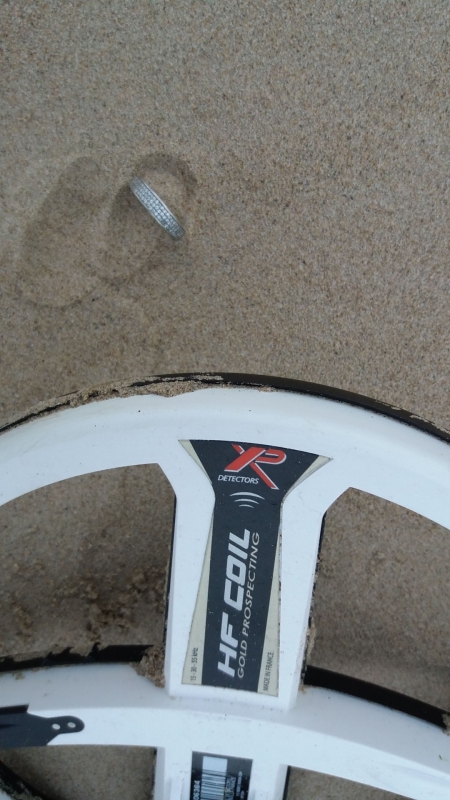


.thumb.jpg.77e4cb5bf39d44bdd2050d2edb7dfdb1.jpg)







